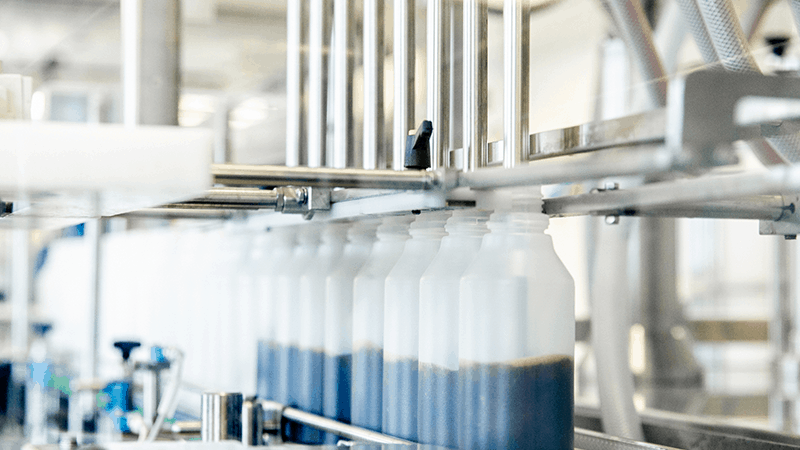If you’re a manufacturer of products that contain viscous liquids, you’ll be fully aware of the benefits of choosing the right automatic liquid filling machines. You’ll also understand the potentially dire consequences of picking the wrong one.
This handy article will guide you through the key issues to consider as you take the important step of automating your line with a liquid filling machine.
What are Automatic Liquid Filling Machines?
Automatic liquid filling machines package liquid finished products across almost all packaging sectors.
The need to accurately fill containers with liquid products is common to the food and beverages, pharmaceuticals, chemicals, nonwovens and cosmetics industries. Some sectors require particularly precise technologies. With nonwovens packaging for example, liquids have to be filled homogeneously so that every wipe contains the same amount of liquid.
Automatic liquid filling machines are the first, and most important step into automation for many manufacturers. This is because:
- Customers usually have contact with the finished liquid product
- Automatic liquid filling machines are far more accurate than manual filling methods
- Automated filling machines are capable of far higher production speeds than with manual filling
- The ‘right’ automatic liquid filler will be reliable in terms of output and hygiene
Challenges faced when filling bottles with liquid
Filling containers with liquid products is fraught with challenges. The first is the sheer variety of liquid product on the market. For example, some liquids are foamy, others are creamy, runny (like water – 1 Centipoise) or dense (like peanut butter 250,000 Centipoise).
If you’re a manufacturer of multiple different liquid products, it’s imperative that you choose an automatic liquid filling machine that is engineered for the types of viscosities you are dealing with.
As well as dealing with different types of liquid, manufacturers often have to cater for multiple different container types too. For example:
- Buckets
- Canisters
- Plastic bottles
- Glass bottles
- Plastic tubes
- Plastic tubs
- Doypacks
- Vials
Changes in the size and shape of containers can affect the speed and accuracy of filling and result in slowed production or increased waste if your filling machine is not up to the job.


